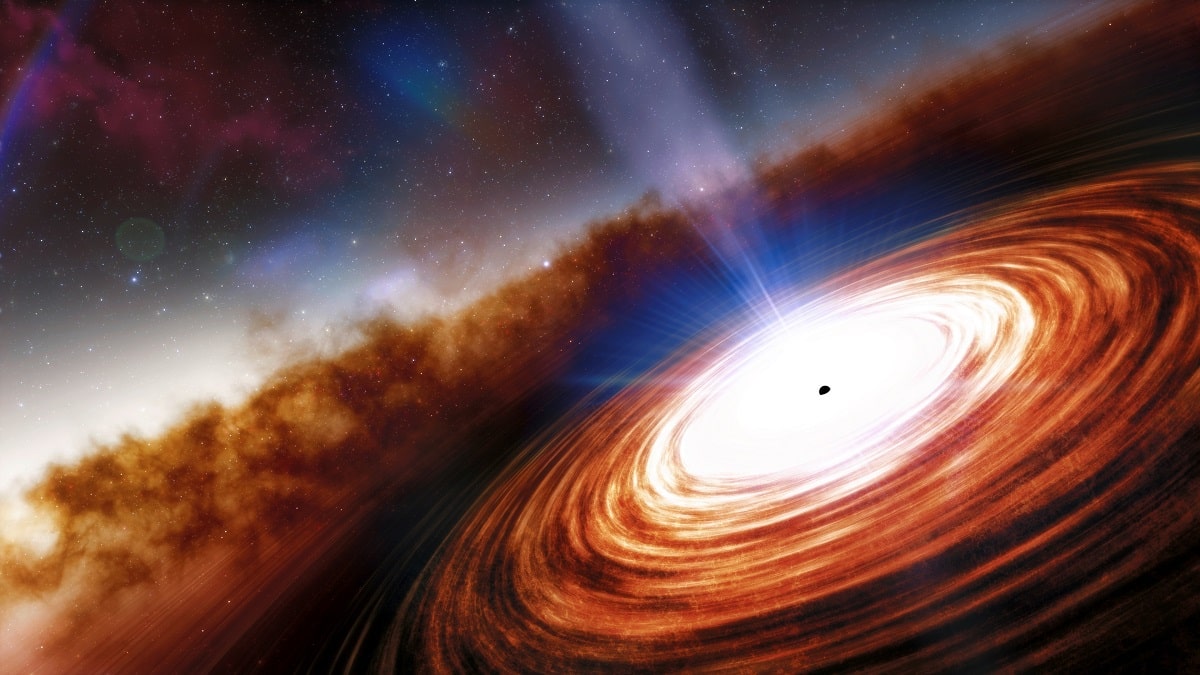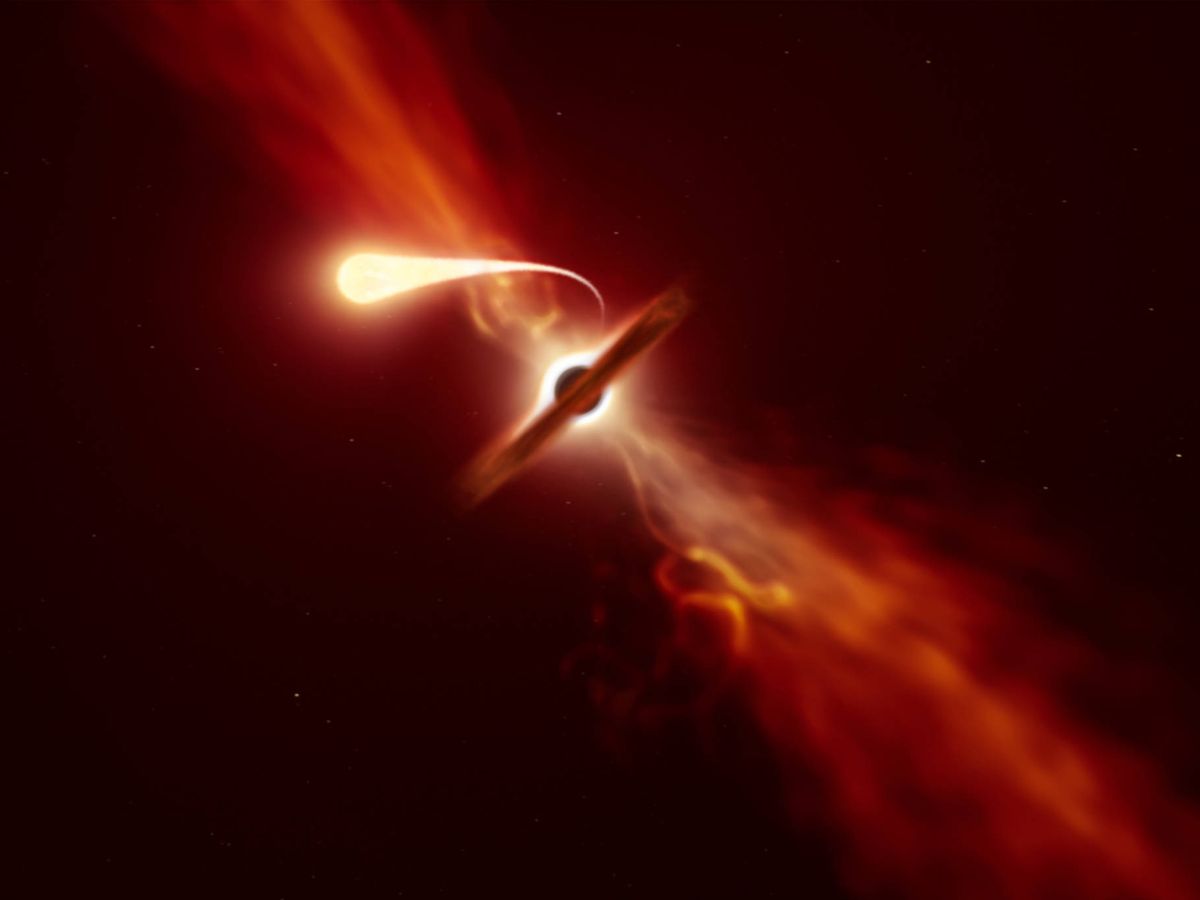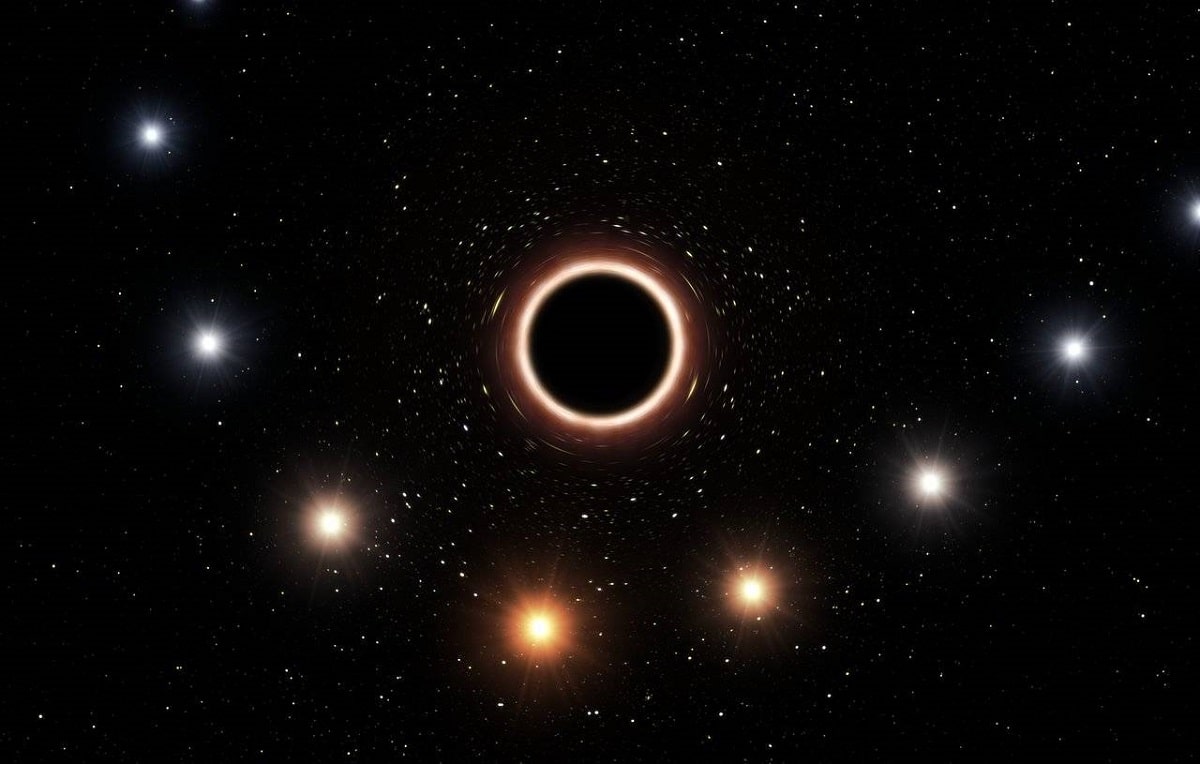
Black holes are among the most mysterious objects in the universe, and the most studied are stars and supermassive black holes. For a type of star to form, the star must first die suddenly. On the other hand, we are still not sure about the origin of the supermassive black holes found in most galaxies. At the singularity, the center of the black hole, is where time and space stop.
In this article we are going to tell you what supermassive black holes are, their origin and characteristics.
What are supermassive black holes

A black hole is a finite region of space-time where the gravitational field is so strong that nothing, including light, can escape. Black holes themselves cannot be observed, but the matter around them can be detected. This is called an accretion disk. It is formed from matter that is attracted to the center of the black hole.
General characteristics
Here are some features of stellar black holes and supermassive black holes:
- Stellar black holes form when stars die. As for supermassive objects, their origin is not well known, but it is believed that they are closely related to the birth of the Milky Way.
- Due to its strong gravitational pull, nothing can escape, not even light. However, if you are at a safe distance, nothing will happen.
- They are very big, with stars tens of times more massive than ours.
- They do not have a rigid or solid surface. For example, the event horizon is not an entity that can be said to start here and end there, it is an invisible boundary, but once there is no going back.
- Black holes grow by trapping matter like gas and dust from nearby stars, and even by merging with other black holes.
- Due to the quantum effects they emit, It's called Hawking radiation.
- For all their majesty, black holes are simple, and we only know their mass, angular momentum, and charge.
- They have a singularity at their center, which is where all matter ends. The end of space and time is a densely packed dot.
- It is believed that every galaxy has a black hole at its center. However, more research is still needed.
- When two black holes merge, they create disturbances in space-time called gravitational waves. It could even be somewhere between a black hole and a neutron star.
- Supermassive black holes can produce massive jets of supermatter
- Heat, such as X-rays, gamma rays, and radio waves, which travel at nearly the speed of light, they extend hundreds of thousands of light-years from the poles of the black hole.
- Black holes clearly cannot be observed, but as they absorb matter from nearby objects such as stardust, stars, and galaxies, they become visible as accretion disks form around them.
How supermassive black holes form

To get a little idea of how black holes are formed, we can imagine that we strongly compress an object to increase its density, however, due to electromagnetic and nuclear forces, the material will begin to resist.
For us, to compress it into such a small, extremely dense volume to form a black hole would require enormous force, or implosion, like a supernova. A supernova occurs when a massive star dies, releasing a large amount of energy in an explosion, and collapsing to form a black hole.
The most studied types of black holes are stellar-mass black holes and supermassive black holes. Stellar black holes are the cold remnants of massive stars (10 to 15 times more massive than our sun) that have entered the final stages of their lives. These black holes are scattered throughout our galaxy and universe.
Many stars in their final stages eventually become white dwarfs or neutron stars. However, these stars can be so unstable that they produce explosions called supernovae. At this stage, the star does not have enough strength to withstand the gravitational pull, so the star begins to shrink until it forms a black hole.
This is a binary star system located next to a massive star next to a stellar black hole, from which it draws energy. Both are part of a binary star system, where the first star becomes a black hole after undergoing a massive explosion called a supernova. The second is absorbed, its material forms an accretion disk, and it emits radio waves or X-rays.
Supermassive black holes are veritable monsters that exist at the center of many galaxies, including our own Milky Way. They have masses in the millions or billions of solar masses and extend as far as a solar system.
Supermassive black holes play an important role in the evolution of galaxies. It has been observed that most (but not all) galaxies have a supermassive black hole at their center. The origin of supermassive black holes is a research area with great potential today. There is still much to discover.
Structure and parts of a supermassive black hole

A black hole consists of the following structures:
- Singularity: It is the central point of a black hole of infinite density, where matter ends, where the laws of physics no longer make sense, and where time and space cease.
- event horizon: It is the point of no return, the singularity around the black hole, and it is the size of the Schwarzschild radius. The escape velocity here is equal to the speed of light, so matter (particles and radiation) crossing the event horizon boundary will not be able to escape, not even light. This is a one way trip.
- accretion disk: it forms around a black hole as it captures matter from a nearby object, such as a star. The disk, made of superheated gas and dusty matter, also spins at high speeds, producing radiation such as X-rays and radio waves. The black hole will get its food from this disk of matter.
- Ergosphere: It is the region around the rotating black hole, far from the event horizon. Here, space and time are sucked into the vortex that surrounds the black hole. An object can enter and leave the ergosphere (if it supports tidal forces).
- relativistic jets: are large expanses of very hot matter traveling at close to the speed of light, primarily X-rays and radio waves, which create nearby jets at the poles of a black hole as it feeds on the object's material.
I hope that with this information you can learn more about what massive black holes are and their characteristics.